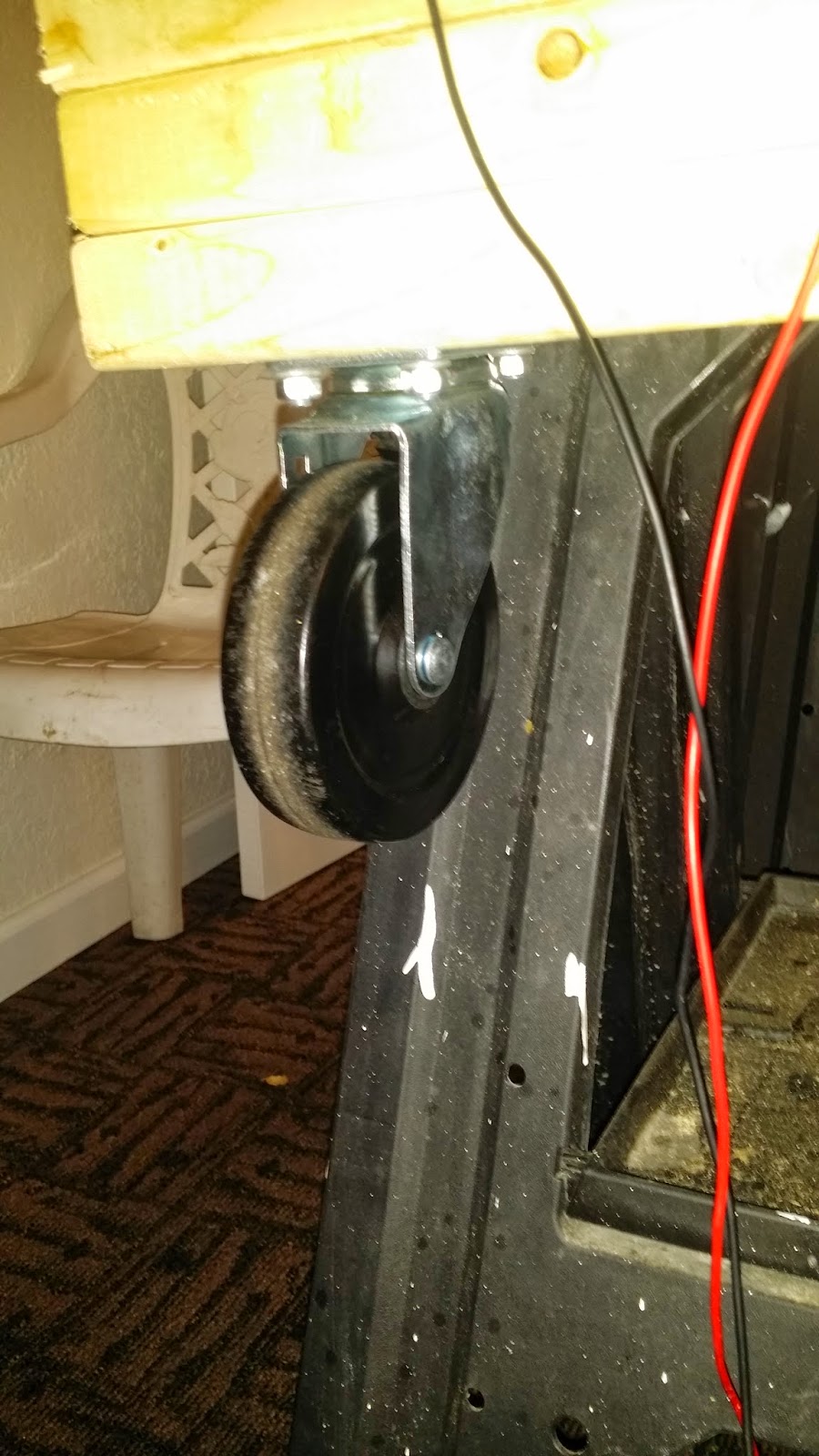We have come along way and we hope that everyone enjoys our project.
These pictures were just us on the expo early. We wanted to get a good spot and assemble our project in time for the expo.
Here is a video! We managed to get it to move straight, but we still have to give it a little push. If we tried to increase the duty cycle to high we end up blowing a fuse. We are still pretty proud of it.
Here is a picture of the entire project finished.
That's us! Sadly one of our group member could not make it to the meeting.
Regarding the end of the project, we believe we did fairly well. We took a lot of the concepts we learned in the class and tried to integrate them in the project. If we had managed our time a little more we might have been able to integrate the joystick and maybe some steering mechanism. We were also looking at changing out the gears. I think the main reason we can't get the chair to move with someone heavy on it is because our gear ratio's could have been better. However, what we found at the hardware store was the best combination we could find. Other than that, we also wished we had a made better decision about what to do for a laser cutting and 3d printing. We really wanted to incorporated something that could hold the joystick in place and protect it. Now looking back, I think we would of also incorporated the UML logo. We ended up just using a laser cut cardboard box, but it was way to big. Regardless if what we didn't do, we will learn from those mistakes and incorporate the process in future classes.
























